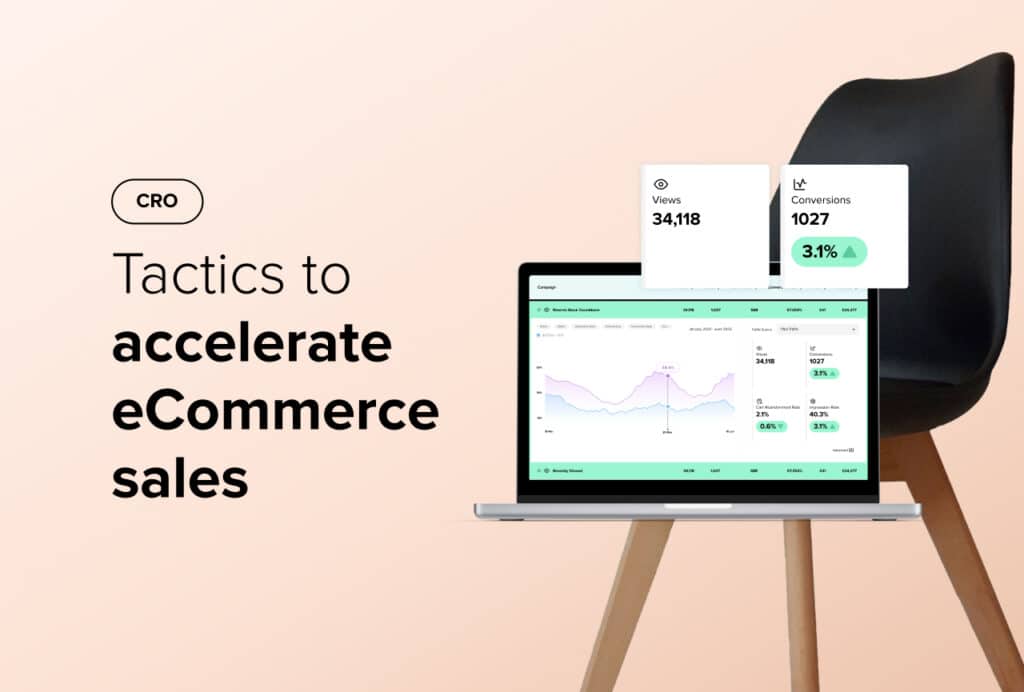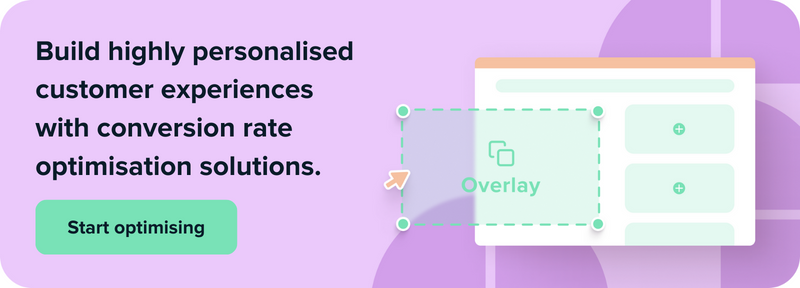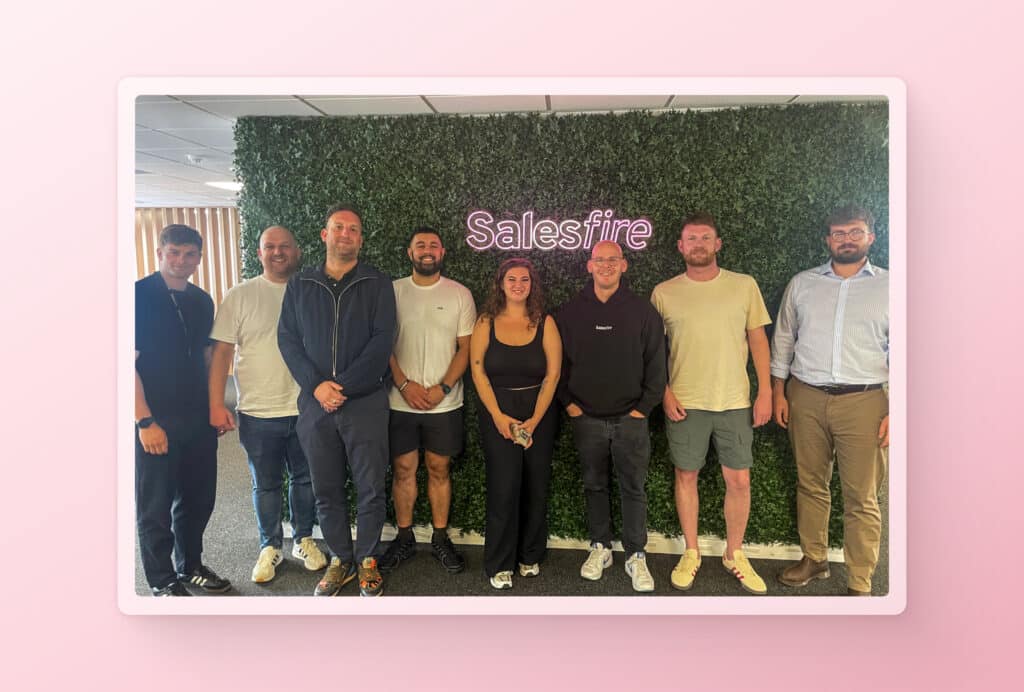The Ultimate eCommerce CRO Checklist
By Courtney O'Riordan • Last updated: Friday Aug 2nd, 2024

Have you ever wanted to increase the number of sales your site generates?
Your answer is most likely yes — that is, if you’re an eCommerce site with goals of growth and success.
To get you there, we’ve put together the ultimate conversion rate optimisation checklist to help your business reach its full potential.
Let’s go back to basics
Before we delve into our conversion-boosting strategies, let’s refresh your CRO knowledge.
Suggested reading: We get into more depth about how to improve your CRO in our blog, A Guide to Conversion Rate Optimisation
What is conversion rate optimisation (CRO)?
CRO involves increasing the number of website visitors who take a desired action.
This desired action can vary depending on what your online store hopes to achieve.
Some examples of common conversions are:
- Completed purchases
- Newsletter sign-ups
- Account creation
- Increased website traffic
- Content interaction
No matter your goal, optimising the user experience will provide the foundations needed in order to achieve it.
While our advice can help you drive any type of conversion, in this article we’ll be talking about completed purchases as the goal.
Why is CRO important?
In the past few years, economic, societal and political events have undeniably impacted eCommerce websites.
There is a growing sense of money consciousness among shoppers, so you need to maximise the value of every site visitor.
A cost-effective way of doing so is through conversion rate optimisation.
Tackling rising customer acquisition costs by focusing on building consumer confidence and trust will help significantly in future-proofing your online store.
The Perfect CRO Checklist
Now you have your business goals in mind, let’s discuss how you can build on-site customer journeys that convert.
1. Make your site reactive
Connect with your shoppers on a personal level by responding to their individual journeys on your site.
Be on hand to answer FAQs and support successful sales at any time with the implementation of a live chat.
With an expected growth of up to 87% in the next 18 months, the days of this tool being little more than an optional website add-on are gone.1
Focus on pre-formatting answers to generic questions to uphold immediate on-site response times when customer service representatives are not on hand.
Your efforts at guiding your shopper to complete a conversion shouldn’t end there. Deploy Overlays at the most influential points of the customer journey to provide timely incentives.
Overlays can push your customers through the conversion funnel by engaging with them on a personal level, whether that be:
- Using your Overlays to offer a discount upon exit intent
- Alerting them to a free shipping policy to push a consumer through the conversion funnel
- Increasing your email capture conversion rates by prompting newsletter sign-ups.
Reacting to each shopper’s actions on-site provides a level of attentiveness that will make them feel confident in purchasing from you.
2. Optimise your checkout
Even if a customer has an item in their basket, it’s not guaranteed that they will convert.
As a matter of fact, 17% of online shoppers abandon their shopping cart because the checkout process is too long and complicated.
In the minds of a customer, ease and convenience are paramount to the user experience.
Provide them with exactly that by including autofill information or a guest checkout option.
In addition to creating satisfied customers, you will drive faster, fuss-free conversions.
It’s also important to consider the 9% of customers who abandon their shopping carts because there weren’t enough payment options.
The modern shopper has become accustomed to ‘buy now, pay later’ services.
This means that checkout pages without this form of payment option are checkouts that lose conversions.
The lucrative Gen Z and Millennial audiences are seeking the likes of Klarna and Clearpay to simplify shopping.
Prepare to secure all-important conversions from these groups by optimising your checkout with these key groups in mind.
Pro tip: Encourage customers to complete a purchase by promoting Klarna within Search using promotional units.
This way, you can remove barriers to entry as a shopper is scrolling to increase the likelihood of a purchase.
3. Revamp product pages
Product pages should provide all the information needed to make a visitor feel secure in converting on your site.
Ways to ensure your website is delivering on this include:
- Creating an informational product description: Include vital descriptors such as dimensions, delivery information and care advice. Don’t forget to add SEO keywords to further your reach and Google ranking.
- Provide high-quality product images: Showcasing your product clearly should be a priority when encouraging customers to buy. You could also incorporate user-generated content from social media in your carousel of images to further build trust.
- Display a clear call to action: Making it difficult for customers to find the ‘add to basket’ button could cause them to drop off. Your page should have straightforward CTAs in easily-accessible areas.
Reaching the eCommerce conversion rates you’ve dreamt of means you need to go even further. Deploy Digital Assistant on product pages to convert even more of your website traffic.
Use this eCommerce solution to enhance your customer’s shopping experience through intelligently triggered campaigns that influence a conversion.
For example, urgency can be created on product pages by displaying the number of shoppers viewing a product. Or, consider highlighting your product reviews to build confidence, leverage social proof, and encourage purchases.
But what happens if, despite your best efforts, a customer decides this product does not fit their specific needs?
You can eliminate this possibility by displaying personalised Recommendations on product pages.
This not only increases product visibility and interaction, but improves the chances of a shopper finding their perfect purchase.
Optimised product pages with Salesfire solutions are key components to the success of an eCommerce website.

4. Introduce omnichannel marketing
Running an eCommerce store is not as simple as having a product on a website.
Over time, the experience has evolved to include multiple touchpoints across various devices and platforms to facilitate conversions.
In particular, focusing on social media marketing will allow your brand to increase visibility in a saturated market and build a strong consumer/business relationship.
Exposure to potential customers across new platforms makes it extremely important that your messaging is consistent across all your channels — from your website and emails to your social accounts.
After all, the Interacting Advertising Bureau found that consistent messaging across multiple channels could increase the purchase intent of consumers by 90%. 4
5. Create a thoughtful website navigation
The power of a user-friendly site should not be underestimated when it comes to your conversion rate optimisation strategy.
Crafting a customer journey that easily guides customers to a purchase begins on the very first landing page.
Prepare to personalise landing pages based on how your customer has discovered your site — whether that be through specific ads or promotions, or even just through Google.
This will immediately show your customers why they have landed on-site and begin their customer journey with purpose.
Importantly, your customer should be able to reach the category page from wherever they land on-site.
From there, consumers can narrow down their search and proceed through the conversion funnel.
This will speed up the product discovery process, thus minimising the chances of them exiting your site.
Pro tip: A crucial aspect of successful website navigation is offering customers the ability to search your product catalogue with ease.
Consider perfecting your navigation bar with Salesfire’s Search to offer effortless search functionality, no matter where a customer is in their journey.
Producing relevant results in a fraction of a second makes for a frictionless user experience that converts.
Complete Salesfire’s CRO Checklist to thrive in eCommerce
The most successful eCommerce retailers optimise their sites to build a user experience that not only converts visitors but also satisfies customers in a way that will keep them returning.
Not taking the time to deploy a CRO strategy could be the difference between reaching your goals or falling short of them.
Eliminate possible confusion about what is best for your site by utilising Salesfire’s expert advice and solutions.
1 25 Reasons Live Chat Can Help You Grow Your Business in 2023 | Super Office
2 48 Cart Abandonment Rate Statistics 2022 | Baymard Institute
3 48 Cart Abandonment Rate Statistics 2022 | Baymard Institute
4 4 Powerful Ways Omnichannel Marketing Helps Boost Your ROI | Moengage
Ready to transform your eCommerce site with Salesfire’s suite of tools? Give us a call on 020 4505 9040, or book a free demo.





